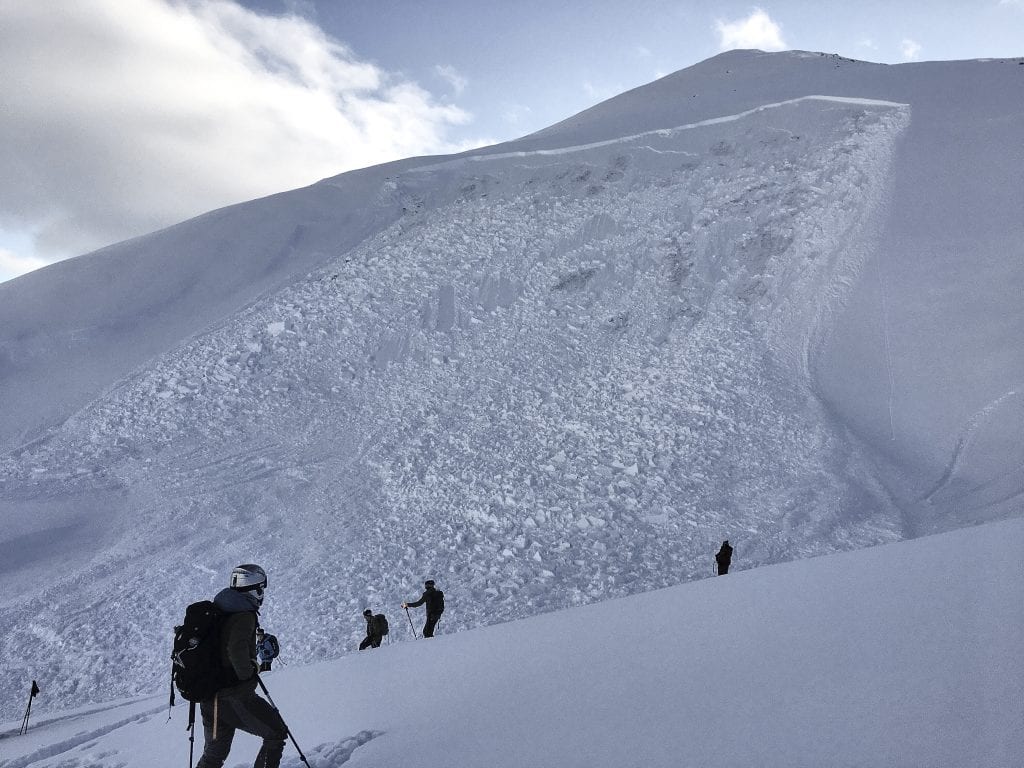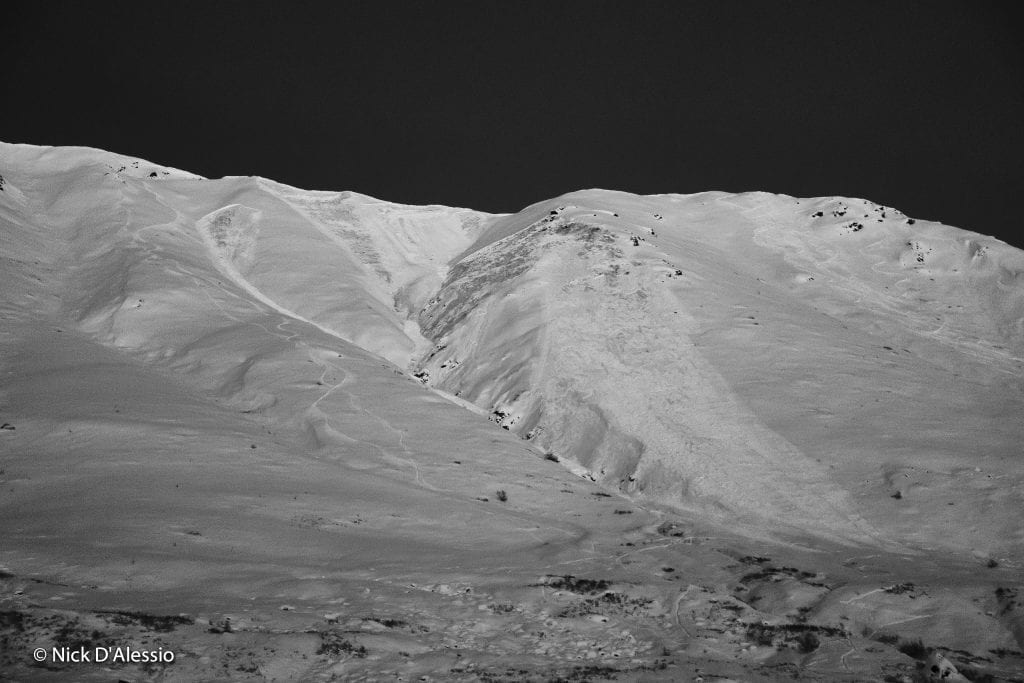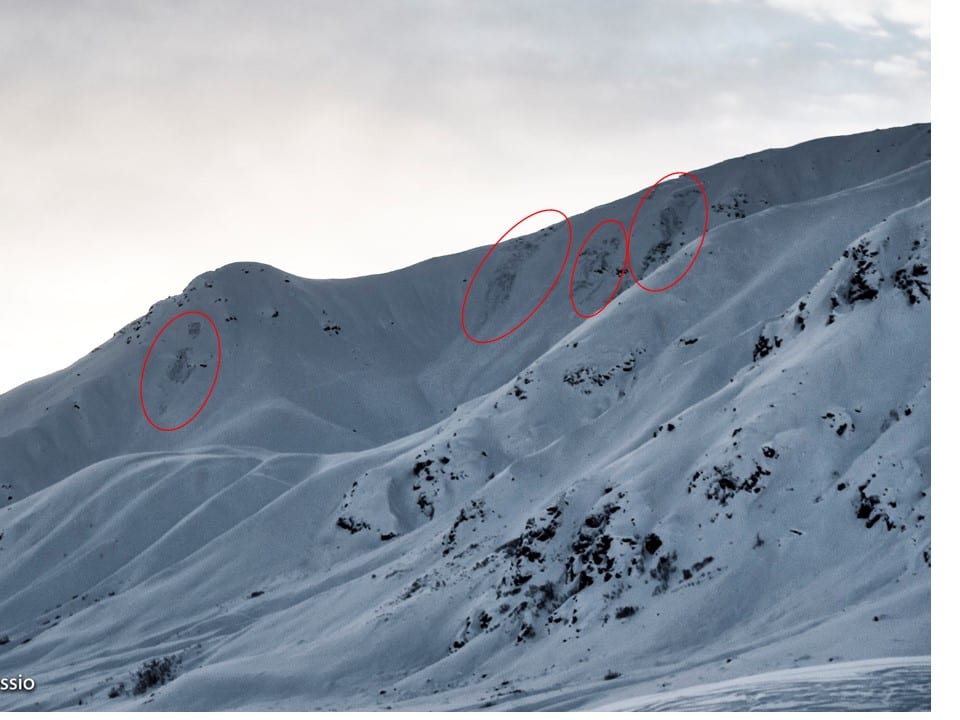

Hatcher Pass
|
|
Numerous human triggered avalanches, including many remotely triggered avalanches occurred on 12/9. New snow and wind tipped the balance Saturday evening and into Sunday.
While some natural activity occurred, the majority appears to be human triggered and in many cases remotely triggered. Remote avalanches are a different beast, and very difficult to predict where we can trigger them, and who is in the way.
A partial burial, all but an arm exposed, on Hatch Peak ended well yesterday, due to a successful, quick companion rescue. This is a great example of the importance and effectiveness of companion rescue skills. We are all thankful this incident did not have a worse outcome.
More information is available in the observation platform HERE.

12/6/2018 – Hatch Peak, approx 4000′, N, SS-ASr-D2-O/G. Remotely triggered, one person caught, partially buried with one arm exposed, companion rescued. Limited information, however, it sounds like the skier who was buried, triggered the avalanche remotely from below the slope.

12/9/2018 – Human triggered and remotely triggered avalanches on Marmot Mountain, SW, 3600-3900′, SS-ASr/Asu-D1/2.5-O/G, No involvement. Limited information.

12/9/2018 – Skyscraper Mountain, E and NE, 3900′-4500′, SS-ASu/ASr-D1-2-O/G. Limited information. Human triggered and remotely triggered avalanches, solo skier, no injuries or involvement reported.
| |
|
|
|
|
|
| Travel Advice | Generally safe avalanche conditions. Watch for unstable snow on isolated terrain features. | Heightened avalanche conditions on specific terrain features. Evaluate snow and terrain carefully; identify features of concern. | Dangerous avalanche conditions. Careful snowpack evaluation, cautious route-finding, and conservative decision-making essential. | Very dangerous avalanche conditions. Travel in avalanche terrain not recommended. | Extraordinarily dangerous avalanche conditions. Avoid all avalanche terrain. |
| Likelihood of Avalanches | Natural and human-triggered avalanches unlikely. | Natural avalanches unlikely; human-triggered avalanches possible. | Natural avalanches possible; human-triggered avalanches likely. | Natural avalanches likely; human-triggered avalanches very likely. | Natural and human-triggered avalanches certain. |
| Avalanche Size and Distribution | Small avalanches in isolated areas or extreme terrain. | Small avalanches in specific areas; or large avalanches in isolated areas. | Small avalanches in many areas; or large avalanches in specific areas; or very large avalanches in isolated areas. | Large avalanches in many areas; or very large avalanches in specific areas. | Very large avalanches in many areas. |
Dangerous avalanche conditions will linger and continue into this week, as weak layers in the snowpack persist. Natural avalanches are possible and human triggered are likely. Remotely triggered avalanches will continue to be possible, and indicate an unstable snowpack, where you will be able to trigger avalanches from below or adjacent to a slope.
Any new load, from wind, new snow, or rain will again increase the hazard.
Safer terrain is less than 25º and out of the runnout of steeper slopes from above.
When traveling in the backcountry under these conditions, it is imperative to use safe travel protocol, such as traveling with partners, spacing out, only one person on slope at a time, do not gather up at the base of slopes, use safe zones to limit the exposure to your group.
A weathery outlook this week will make visibility challenging at times, which could make it difficult to assess your route choices and safety margins. Poor visibility can make a rescue much more challenging.
A big thank you to everyone who submitted observations yesterday, please continue to share HERE. If you are on facebook, please hashtag relevant posts with #HPavalanche